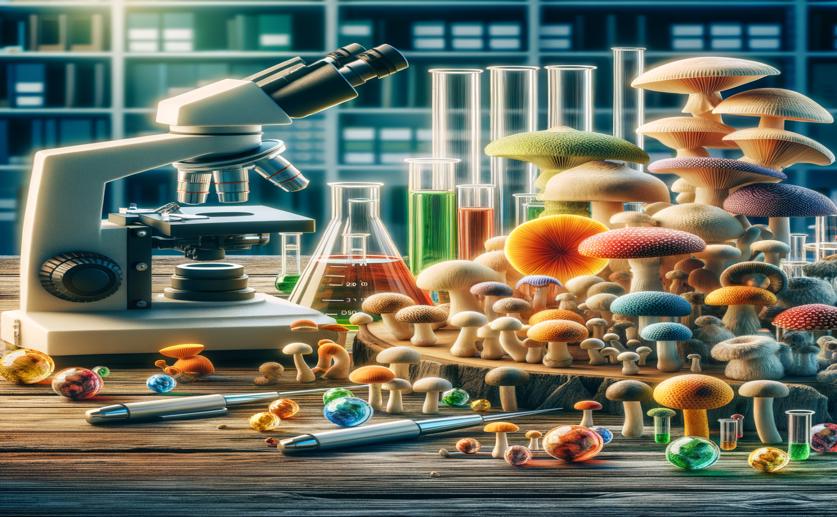
Discovering Mushroom Compounds to Fight Tuberculosis: A Multi-Target Approach
Jenn Hoskins
20th June, 2024

Image Source: Natural Science News, 2024
Key Findings
- The study from Dayananda Sagar College of Engineering focuses on identifying new drug targets in Mycobacterium tuberculosis (Mtb) to combat tuberculosis (TB)
- Researchers targeted essential proteins in the Biotin biosynthesis and Lipoarabinomannan (LAM) pathways of Mtb
- Bioactive compounds from mushrooms were tested for their potential as anti-TB drugs, with Benz[e]azulene showing promising results
References
Main Study
1) Screening of bioactive compounds from selected mushroom species against putative drug targets in Mycobacterium tuberculosis: a multi-target approach.
Published 19th June, 2024
https://doi.org/10.1080/07391102.2024.2335292
Related Studies
2) Antioxidant properties and electrochemical behavior of cultivated commercial Indian edible mushrooms.
3) Electrostatic Complementarity as a Fast and Effective Tool to Optimize Binding and Selectivity of Protein-Ligand Complexes.
4) Frequency of the Mycobacterium tuberculosis RDRio genotype and its association with multidrug-resistant tuberculosis.
5) Simultaneous determination of 45 antibacterial compounds in mushrooms - Agaricus bisporus by ultra-high performance liquid chromatography-tandem mass spectrometry.



 23rd May, 2024 | Greg Howard
23rd May, 2024 | Greg Howard